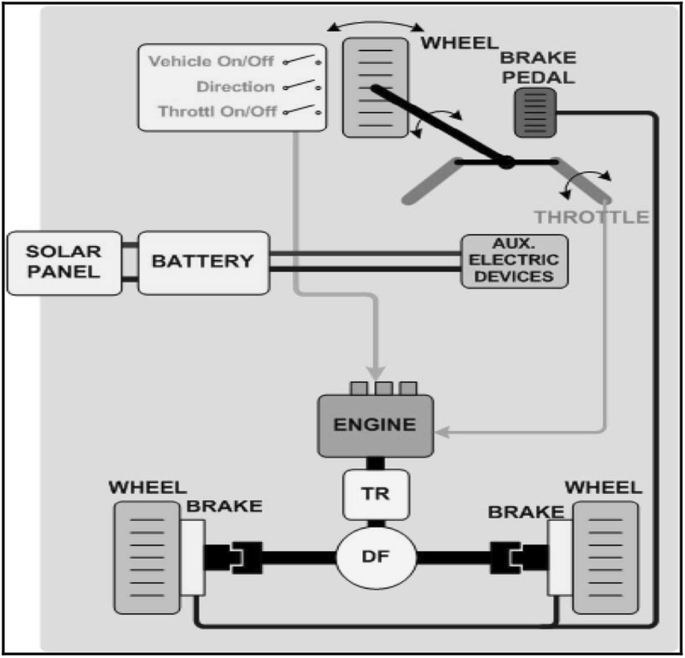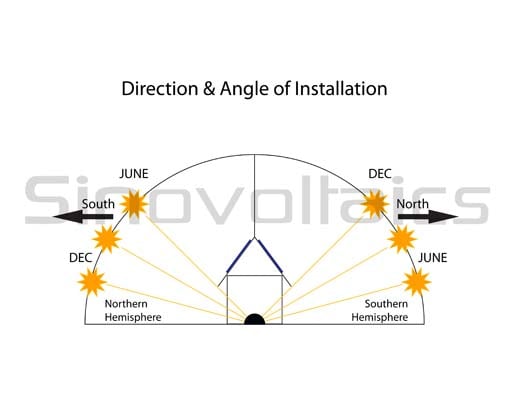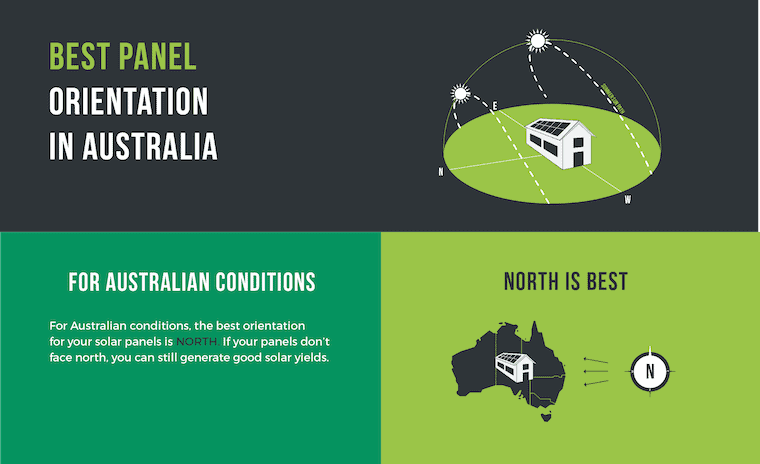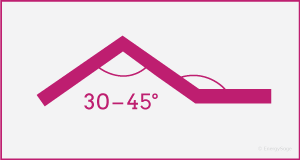Solar panels should always face true south in the northern hemisphere north in the southern hemisphere tilted from the hoizontal at a degree equal to your latitude plus 15 degrees in winter or minus 15 degrees in summer.
Optimal orietation for annual collection solar panel.
The optimal tilt angle in each location is found by calculating panel output with different tilt angles until the tilt angle giving the maximum output is found.
For instance if your latitude is 34 the optimum tilt angle for your solar panels during winter will be 34 15 49.
While the angle of your solar panels is important a more important factor in your energy production is going to be the direction your panels face.
Choose a location to view a sensitivity plot displaying incident solar radiation vs collector orientation.
That tilt angle is the optimal tilt angle.
The optimum tilt angle is calculated by adding 15 degrees to your latitude during winter and subtracting 15 degrees from your latitude during summer.
Solar panel orientation and elevation.
Early morning and evenings are active times in such households.
For example if the location of the solar array is at 50 o latitude the optimal tilt angle is also 50 o.
Annual optimal orientation of fixed tilt solar collectors when mounting a fixed tilt solar collector it is critical to understand the optimal orientation of the solar collector.
So we ve established that there s a sweet spot for your solar panel orientation which is directly south and a sweet spot for elevation which is between 30º and 40º.
While this is not a bad direction it is often possible to get a very small boost by having them face slightly away from due north.
The above 1 21 is a light hearted observation of an average 9 5 working family.
Essentially the closer a solar panel is located to the equator the more the panel should be pointing straight up.
A general rule for optimal annual energy production is to set the solar panel tilt angle equal to the geographical latitude.
So what s the effect on output the further you go from these optimum conditions.
Directly north isn t always best it is generally accepted the best direction to face solar panels to get the maximum possible output is directly north.
East and west facing solar panels ensure an optimised solar panel orientation for these peak times therefore maximising the ability to convert more energy from the available light.
This is because the sun is always in the southern half of the sky in the northern hemisphere.
For the best results solar panels should be oriented towards the south.
Or elsewhere in the northern hemisphere the best direction for solar panels to face is true south though there is an exception.
If you re in the u s.
The more sunlight reaches your solar panels the more electricity you can generate and the more money you ll be able to save on your electric bill.
Orientation of the panels.
Here pvwatts is used to estimate annually averaged solar output in all countries of the world assuming tilted panels.
In general there s one big rule.




























